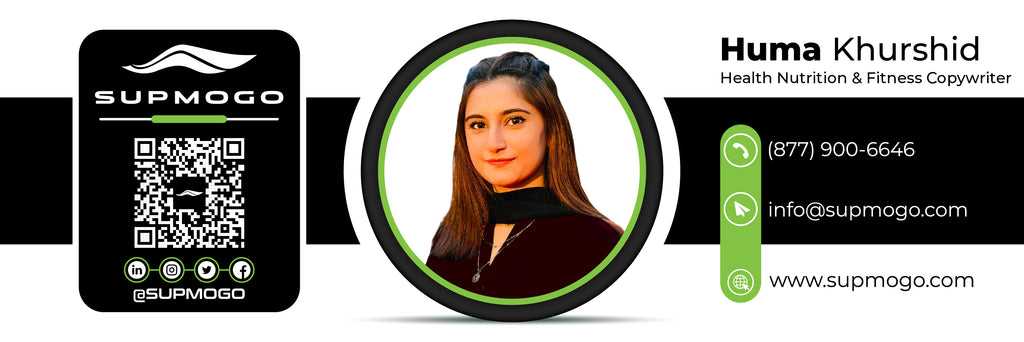Vertebrogenic pain – even the name sounds like an appalling and sickening pain, and sadly, it is.
Vertebrogenic back pain is felt intensely in the lower back region. Its risk gets higher as you get older, around 30-40 years of age. Lack of exercise and not working your back and abdominal muscles can increase the risk.
Most of the time, patients facing this pain misunderstand symptoms and don't get themselves treated appropriately. It's not that they are avoiding the treatment. But it is because the general public usually doesn't know enough about the human anatomy and musculoskeletal system. Even the most qualified physicians and medical practitioners sometimes face problems identifying vertebrogenic pain.
Therefore, people don't know what is vertebrogenic low back pain. What causes it? How is it diagnosed? How can it be treated?
But don't worry! In this blog, you will learn everything you need to know about Vertebrogenic pain.
Here's what you'll learn.
- What is Vertebrogenic Low Back Pain?
- Understanding the Anatomy
- Vertebrogenic Low Back Pain Symptoms
- What Causes Vertebrogenic Low Back Pain?
- Vertebrogenic Low Back Pain Diagnosis
- Modic Changes
- Type 1 MC
- Type 2 MC
- Vertebrogenic Low Back Pain Treatment
- First-Hand Treatments
- Lumbar Support Belts
- Final Treatment–Intercept Procedure
What Is Vertebrogenic Low Back Pain
Vertebrogenic low back pain definition is primarily a sharp and continuous pain in the lower back region that persists for a long time.
This pain occurs when your vertebral endplates get disturbed, weakened, or damaged. These endplates are present between the vertebral body and the discs–providing strength, protecting discs, and making a strong barrier between both to prevent fracture.
(Vertebral Endplates – Vertebral endplates are the transition region where your vertebral body and intervertebral disc interface.)
Understanding the Anatomy
Do you remember someone in your circle always holding their lower back when standing up after sitting for a long time or while walking, bending, or doing any movement?
The most common interception of such lower back pain is intervertebral discs. However, new research data has come up with innovative studies and other pinpoint causes of chronic back pain.
A research team led by Dr. Heggeness concluded that vertebral bodies are vascularized by vertebral capillaries and energized by nociceptors–all of its links to the BVN (basivertebral nerve). [1]
This BVN nerve is a branch of the sinuvertebral nerve that makes its way into the vertebral body through intervertebral foramina – reaching the endplates. With a great range of nerves corresponding around endplates, any minor injury, force, or changes in the endplate can stimulate the nerves to release the neurotransmitters – resulting in chronic pain. [2]
Vertebrogenic Low Back Pain Symptoms
If you've been suffering from lower back pain for a long time and no therapy has helped you recover, it's time you finally get yourself checked. It's important to get checked because chronic lower back pain is the most common symptom of vertebrogenic back pain.
What Causes Vertebrogenic Low Back Pain?
The disturbance of the vertebral endplates begins vertebrogenic low back pain. But why does it happen? What causes changes in these endplates?
Well, there isn't proper research on why the endplates shift or get disturbed. However, some observations suggest that lumbar instability and primary mechanical stress can shift the endplates.
Vertebrogenic Low Back Pain Diagnosis
The root cause of back pain is always challenging to diagnose. However, Vertebrogenic back pain can be diagnosed with an MRI.
If a patient has vertebrogenic pain, the MRI results display the term 'Modic Change.'

Modic Changes
By definition, Modic Changes are bone marrow lesions that can be seen on an MRI scan results.
It is a classification measure that assists doctors in diagnosing Vertebrogenic pain in patients. It highlights the areas on the back/bone marrow that are damaged or disturbed for some reason. There are two types of Modic changes that contribute to low back pain.
Type 1 MC
Modic Change Type 1 shows the vertebral body area extended or particular development. The reasons for inflammation in the vertebral body can be edema and endplate breakage/cracks.
Type 2 MC
Modic Change Type 2 uncovers the changes in the bone marrow. The changes can be fatty deposits that move the bone marrow out and take its place.
Vertebrogenic Low Back Pain Treatment
Don't go all nuts just after reading all the petrifying details of your spine!
Vertebrogenic pain also has treatment options like other diseases and health conditions.
This time, we've "literally" got your back! Read below to find out the treatment options.

First-Hand Treatments
If a doctor diagnoses Modic Change Type 1 or Type 2 in your MRI results, they might give you the following therapy choices,
- Chiropractic medications
- Spinal manipulation
- Injections
- Physical therapy
- Rehab and Strengthening Belts
- Intracept Procedure
Rehab and Strengthening Belts
If you've already tried and tested all other approaches prescribed by doctors, then wearing a rehab belt that has advanced targeting technology is the best way to prevent or treat Vertebrogenic back pain.
The SUPMOGO Recovery Flex System Belt is a dynamic back rehab belt that will give your core and spine strength for stability and aid in recovery. Regularly wearing your SUPMOGO belt can help you hold your spine and discs in place, not letting them slip or disturb the endplates. Hence, preventing Vertebrogenic low back pain!
Moreover, the SUPMOGO belt features EMF technology to work with your body's natural magnetic field and promote healing. A 2016 research demonstrates that EMF treatment can benefit patients facing chronic nonresponsive lower back pain linked to degenerative disc disease. [3]
Final Treatment–Intercept Procedure
According to some clinical trials, the success rate of the Intracept procedure is mind-blowing. 69% of patients reported a significant reduction in pain; however, 38% reported a completely pain-free recovery after 12 months.
The Intracept procedure targets BVN (basivertebral nerve) to provide pain relief. It is slightly invasive–at a safe rate and can be done as an outpatient procedure. It means this procedure doesn't need proper surgery rooms and can be done in any doctor's office. You can even go home after a few hours of this procedure—the total procedure time is approximately 1 hour and 20 minutes.
However, this treatment type only applies to patients who pass the following criteria.
- The MRI scan shows prominent results of Modic changes, either type 1 or type 2.
- It's been more than six months of struggling with chronic back pain
- Chronic back pain has not reduced even after proper treatments and care.
Summing Up!
Vertebrogenic back pain is initiated in the lower back region due to disturbance activity in the vertebral endplates. An MRI is used to diagnose this pain and several treatment approaches are available to help you feel better.
After understanding what is vertebrogenic low back pain, you might be looking out for treatment options that are easy to use and convenient.
You may be interested to learn - The 5 Ways To Fix Back Pain When Bending Forward | Back Pain Relief!
Give the SUPMOGO Recovery Flex System Belt a try and witness the tremendous results! You'll see significant changes in your spine after each usage.

[1] Antonacci, M. D., Mody, D. R., & Heggeness, M. H. (1998). Innervation of the human vertebral body: a histologic study. Journal of Spinal Disorders, 11(6), 526-531.
[2] Conger, A., Smuck, M., Truumees, E., Lotz, J. C., DePalma, M. J., & McCormick, Z. L. (2022). Vertebrogenic Pain: A Paradigm Shift in Diagnosis and Treatment of Axial Low Back Pain. Pain Medicine, 23(Supplement_2), S63-S71.
[3] Arneja, A. S., Kotowich, A., Staley, D., Summers, R., & Tappia, P. S. (2016). Electromagnetic fields in the treatment of chronic lower back pain in patients with degenerative disc disease. Future science OA, 2(1).

